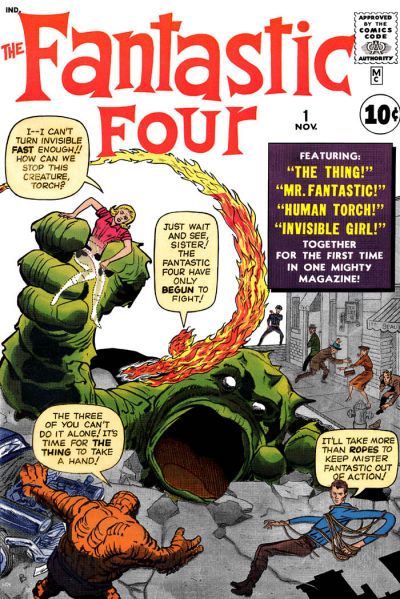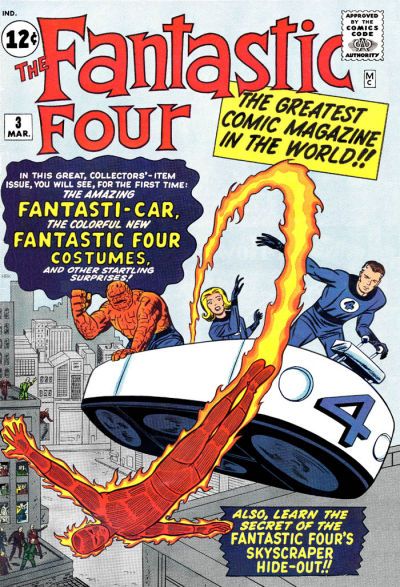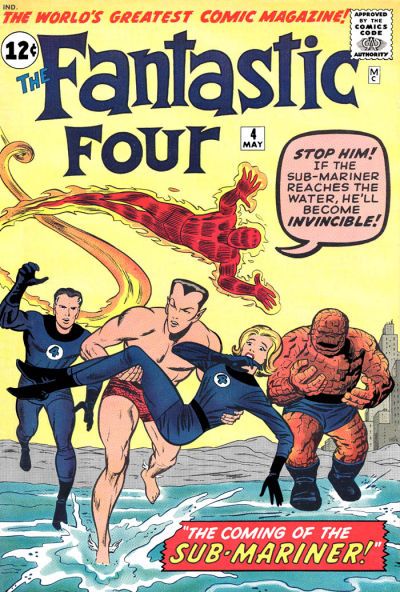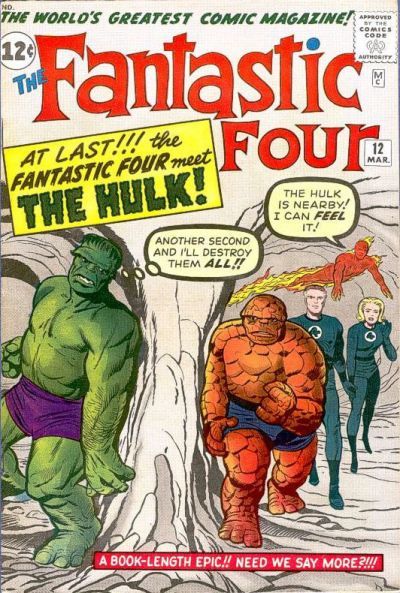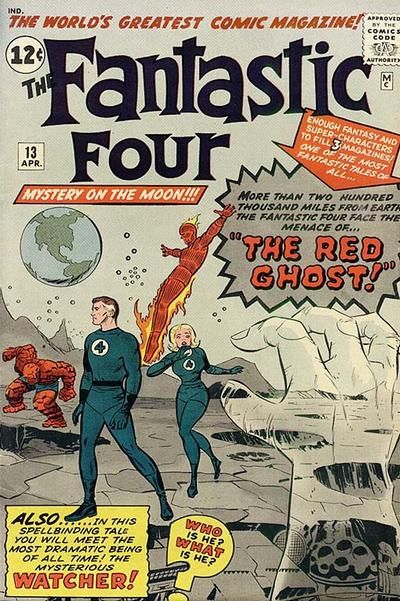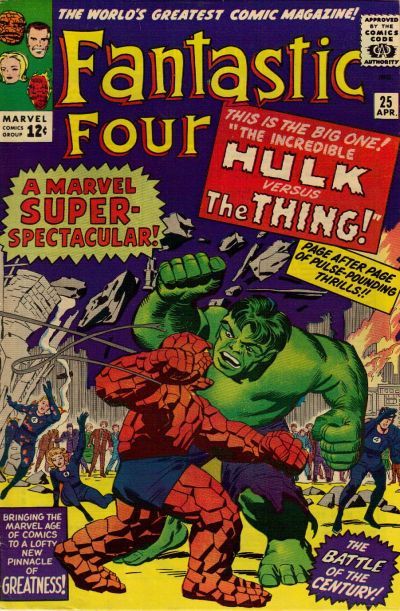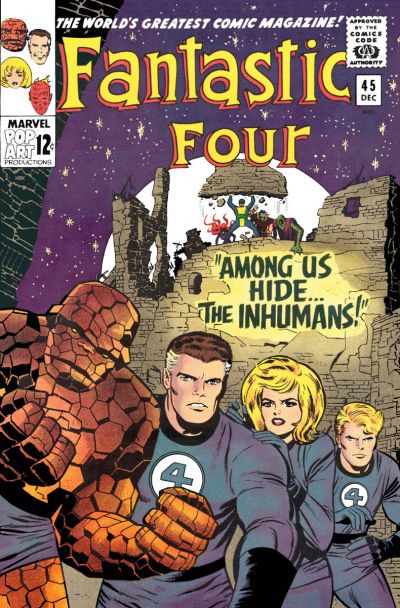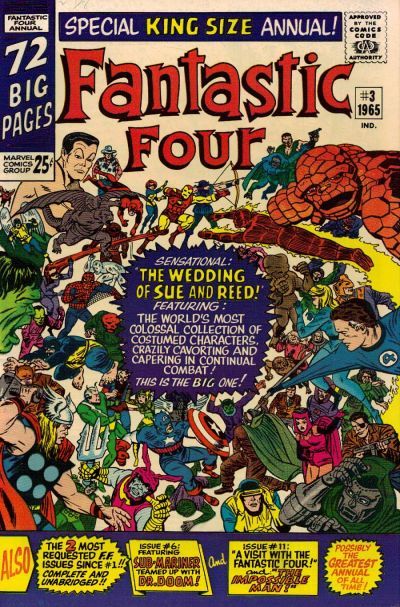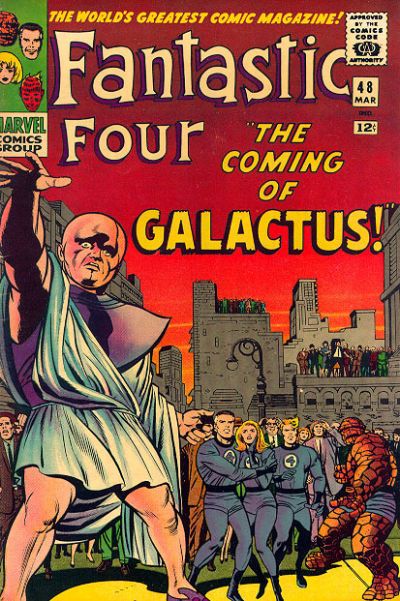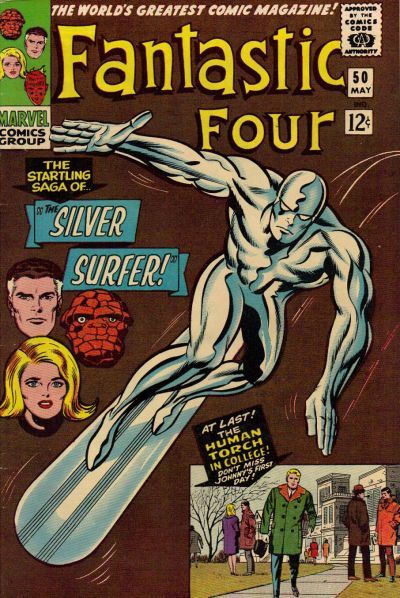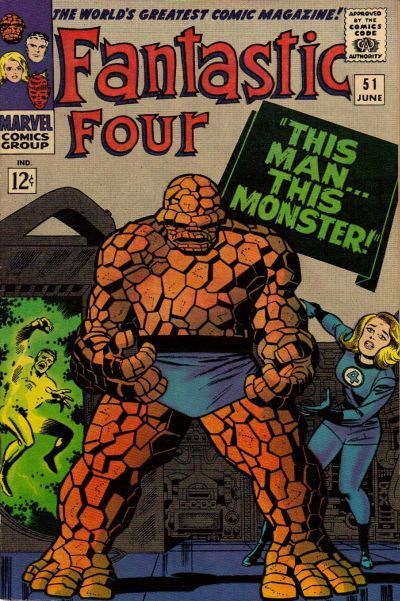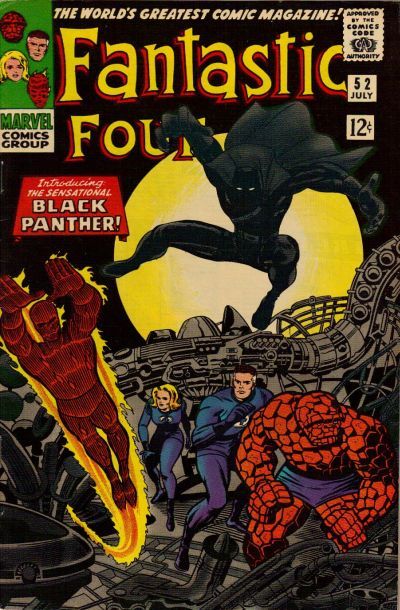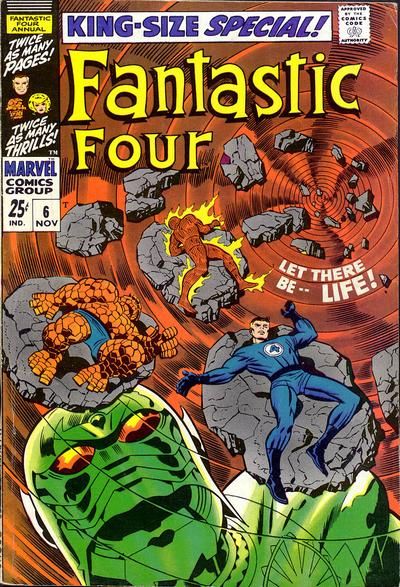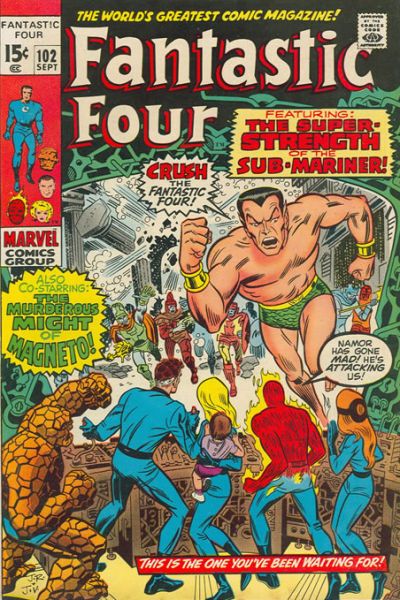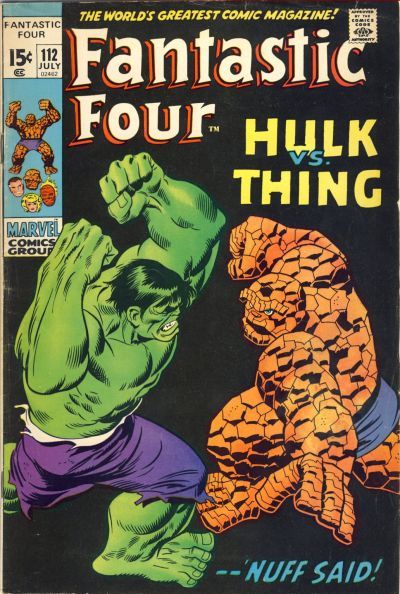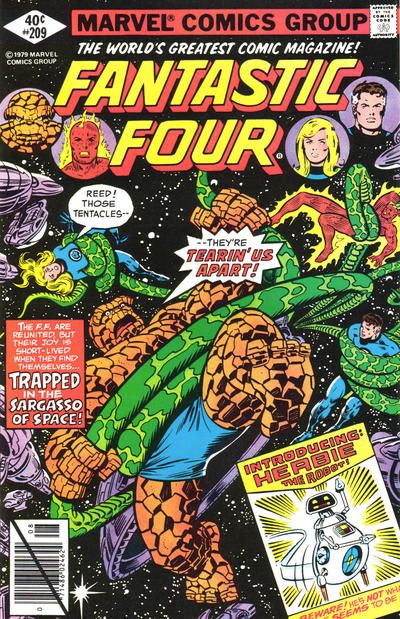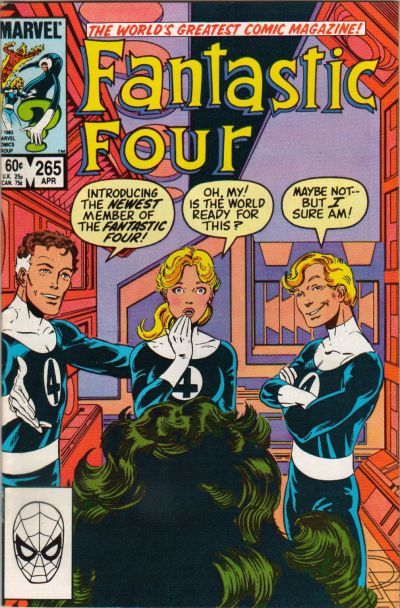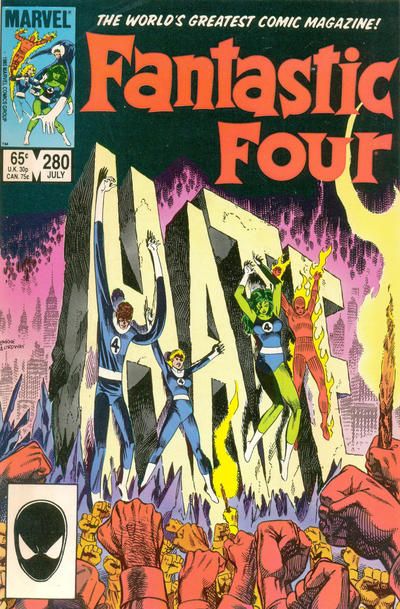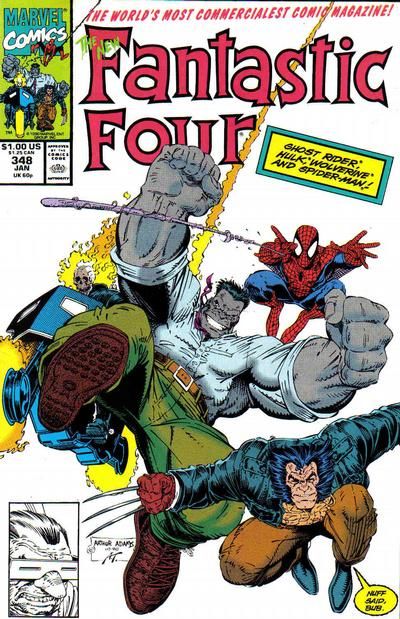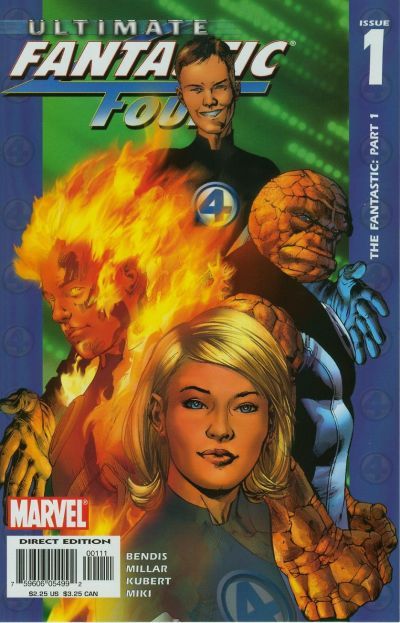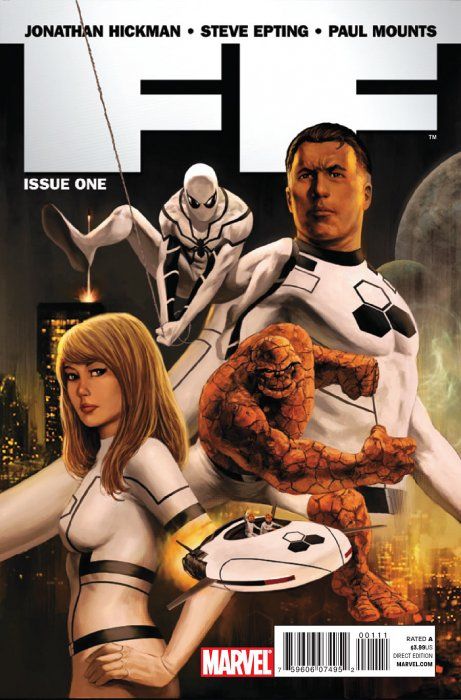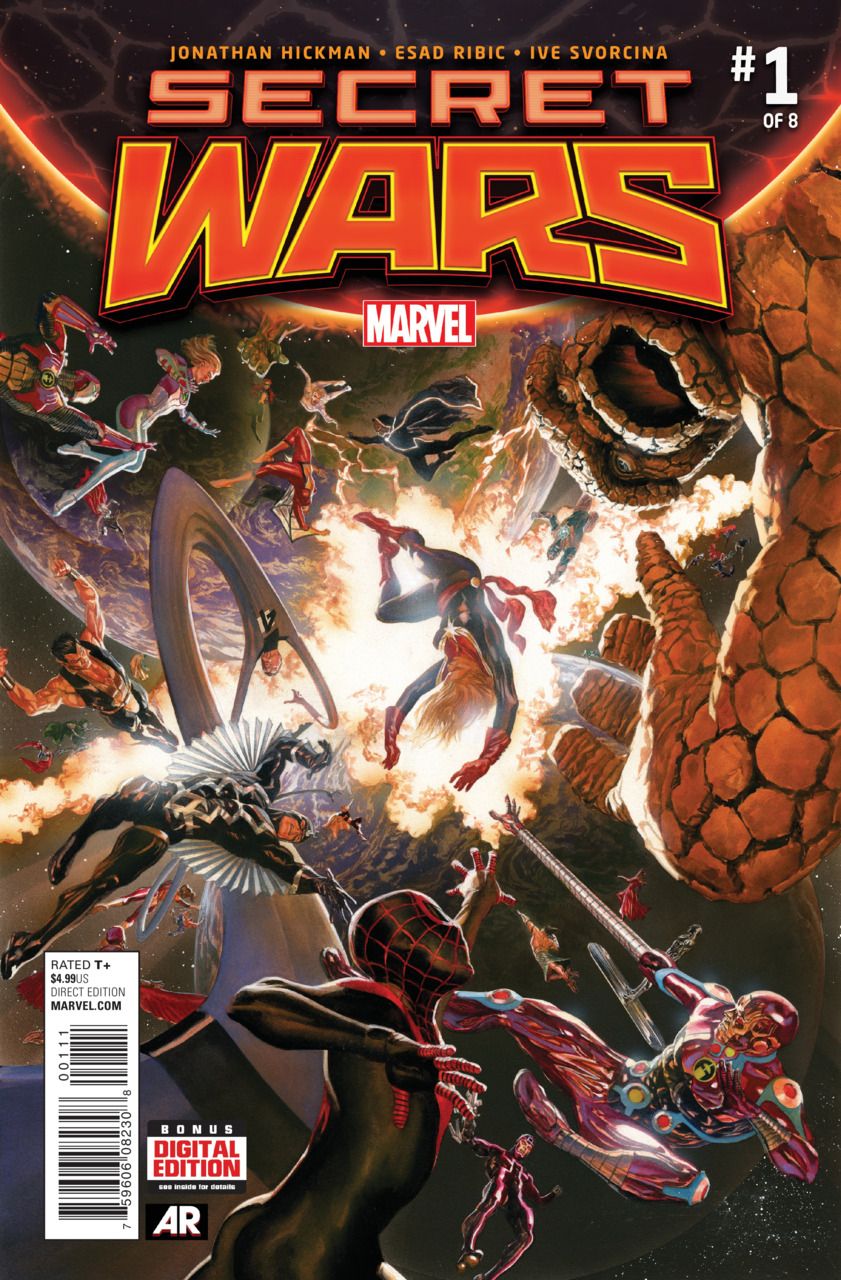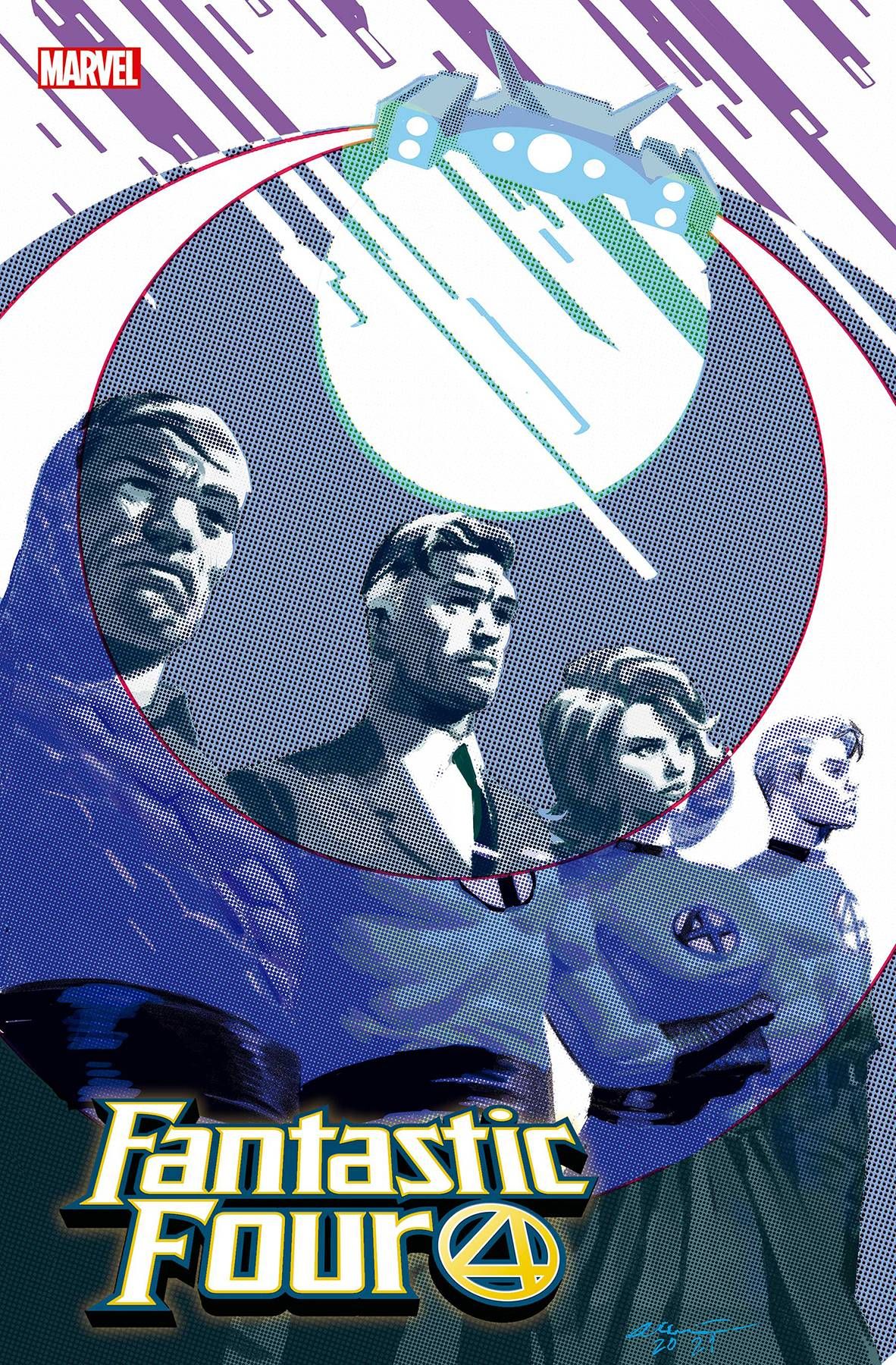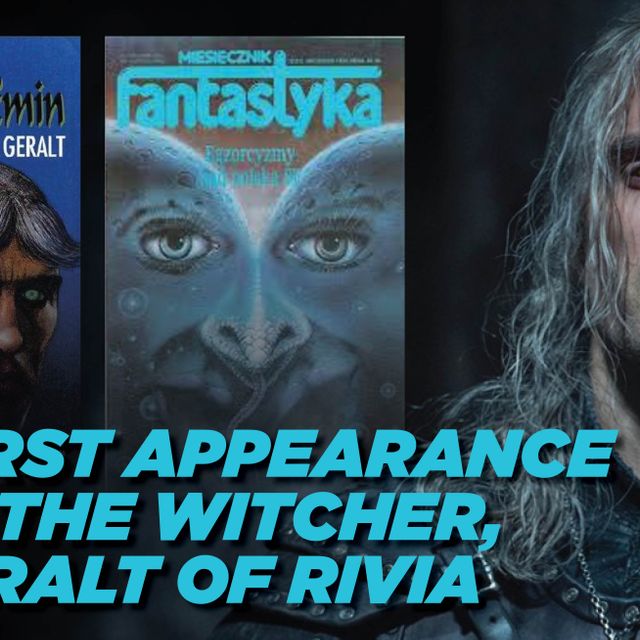Before you grab your popcorn for the next Fantastic Four movie, it’s worth taking a step back to see how the comics shaped Marvel’s First Family. This isn’t a countdown. Instead, we’re focusing on books that carry real meaning for the team, even if it means skipping a few first appearances you’d expect on a typical list. We’ve also included hyperlinks so you can check out the current fair market value and CGC census count for each book as you read. These are the issues that deserve your attention—because it’s Clobberin’ Time.
Fantastic Four #1 (1961, Marvel Comics) Key Significance: Fantastic Four #1 holds a significant place in comics history, marking the first appearance of the legendary superhero team and establishing their origins. It was the first comic published under the new Marvel name, ushering in a new era of superhero storytelling. Furthermore, this important issue also introduced the team's inaugural foe, the Mole Man. | ||
Fantastic Four #3 (1961, Marvel Comics) Key Significance: Beyond their origin, this issue debuted the Fantastic Four's first costumes and iconic vehicles, the Fantasti-Car and Fantasti-Copter. Readers also gained insight into their operations with the establishment of the Baxter Building as their headquarters. | ||
Fantastic Four #4 (1962, Marvel Comics) Key Significance: Namor the Sub-Mariner, a prominent Golden Age character, made his Silver Age debut in this issue. His return played a crucial role in shaping the expanding Marvel Universe sometimes as a villain, or as an anti-hero. | ||
Fantastic Four #5 (1962, Marvel Comics) Key Significance: The debut of Doctor Doom in this issue holds immense importance, introducing one of Marvel's most enduring and formidable villains with his origin story, which detailed his genius and ambition. This appearance set the stage for his complex character and ongoing impact for the Fantastic Four and the Marvel Universe. | ||
Fantastic Four #12 (1962, Marvel Comics) Key Significance: Showcasing the very first encounter between the Fantastic Four and the Hulk. This is considered one of Marvel's first crossover events. Its importance is shared with Amazing Spider-Man #1, which also featured the Fantastic Four in a notable crossover. | ||
Fantastic Four #13 (1963, Marvel Comics) Key Significance: The debut of both the Red Ghost and the all-watching, Watcher, Uatu. As a cosmic observer, Uatu is sworn to non-interference, adding a layer of moral complexity to his presence. His occasional interventions, particularly when Earth is in peril, highlight the ongoing tension within his ancient species' mandate. | ||
Fantastic Four #25 (1964, Marvel Comics) Key Significance: While their first encounter was in Fantastic Four #12, this issue features the first truly significant and extended battle between the Hulk and the Thing. This classic clash of titans further cemented their legendary rivalry and set the benchmark for their future encounters. | ||
Fantastic Four #45 (1965, Marvel Comics) Key Significance: This comic marked the first appearance of the Inhumans, a hidden society of superpowered beings created through ancient Kree experiments. Their debut added new layers to the Marvel Universe and set the stage for their growing presence in future stories. | ||
Fantastic Four Annual #3 (1964, Marvel Comics) Key Significance: The highly anticipated marriage of Reed Richards and Sue Storm, an event that gathered numerous Marvel characters. This celebration highlighted the connections binding the superhero community and established a model for future Marvel weddings. | ||
Fantastic Four #48 (1966, Marvel Comics) Key Significance: The first appearance of the Silver Surfer and the cameo appearance of Galactus. Their introduction began an influential storyline that fundamentally changed the landscape of Marvel Comics. This epic narrative challenged the Fantastic Four in unprecedented ways and introduced a new level of cosmic storytelling. | ||
Fantastic Four #49 (1966, Marvel Comics) Key Significance: The full first appearance of Galactus establishes him as a cosmic entity of incredible power, a force that transcends traditional morality. His presence significantly elevated the scope of threats in the Marvel Universe, confronting the Fantastic Four with challenges of a cosmic scale. | ||
Fantastic Four #50 (1966, Marvel Comics) Key Significance: Brings to a close the storyline featuring Galactus and the Silver Surfer, a multi-part saga that significantly altered the landscape of Marvel Comics. It demonstrated that superheroes could confront threats on a truly universal scale and highlighted a villain whose motivations transcended simple good and evil. | ||
Fantastic Four #51 (1966, Marvel Comics) Key Significance: The memorable "This Man… This Monster!" story, a powerful exploration of Ben Grimm's inner turmoil. This issue also introduced the Negative Zone, a strange new dimension that opened the door for future cosmic stories and dangers. | ||
Fantastic Four #52 (1966, Marvel Comics) Key Significance: The first appearance of the Black Panther in this issue was a moment of immense significance for Marvel Comics. Black Panther not only became the first Black superhero in mainstream American comics but also challenged prevailing stereotypes by presenting a figure of wealth, intelligence, and advanced technological prowess from the fictional African nation of Wakanda. He stands as an early example of the Afrofuturist aesthetic, inspiring audiences and creators alike. | ||
Fantastic Four Annual #6 (1968, Marvel Comics) Key Significance: Introduces two figures of lasting importance: Annihilus and Franklin Richards. Annihilus, the ruler of the Negative Zone, presented a new type of cosmic threat, while the birth of Franklin established a powerful being destined to reshape the Fantastic Four's destiny and even the fabric of reality itself. His reality-warping abilities, even as a child, allowed him to create pocket universes, and as an adult, he would famously resurrect Galactus and make him his herald, demonstrating a power level that even Celestials acknowledged was beyond Omega classification. | ||
Fantastic Four #102 (1970, Marvel Comics) Key Significance: Marks the conclusion of Jack Kirby and Stan Lee's influential run on the Fantastic Four, closing a chapter that established much of the foundation for Marvel's modern universe. This monumental collaboration produced 102 consecutive issues and 6 annuals, shaping the team's identity and introducing key characters like Doctor Doom, Galactus, Silver Surfer, Black Panther, and the Inhumans just to name a few. | ||
Fantastic Four #112 (1971, Marvel Comics) Key Significance: Celebrated for its classic and iconic cover, a dynamic depiction of the Thing battling the Hulk. This powerful image by John Buscema perfectly encapsulates the raw intensity of their rivalry. The artwork became an enduring visual representation of one of Marvel's most popular and long-standing character conflicts. | ||
Fantastic Four #209 (1979, Marvel Comics) Key Significance: The debut of H.E.R.B.I.E. the Robot, a unique member of the Fantastic Four's supporting cast. H.E.R.B.I.E. was initially conceived for the 1978 New Fantastic Four animated series as a replacement for the Human Torch, who was unavailable due to licensing agreements. This issue also marks John Byrne's first work as an artist on the series, foreshadowing his upcoming run that would redefine the Fantastic Four for a new generation. | ||
Fantastic Four #265 (1984, Marvel Comics) Key Significance: A significant shift in the Fantastic Four's lineup as She-Hulk steps in to fill the void left by the Thing. Ben Grimm, having found that his rocky form was temporary on Battleworld, decided to stay behind following the events of the Secret Wars. | ||
Fantastic Four #280 (1985, Marvel Comics) Key Significance: This issue explores a darker side of the Invisible Woman, as she develops the evil alter-ego, Malice, fueled by Psycho-Man's manipulation and her own suppressed frustrations. This storyline delves into Sue Storm's psyche, revealing a depth to her character and a hidden well of power she previously hesitated to unleash. | ||
Fantastic Four #348 (1991, Marvel Comics) Key Significance: This issue is recognized for the cover debut of the New Fantastic Four, a unique team featuring Wolverine, Spider-Man, Hulk, and Ghost Rider. This unusual team-up, though short-lived, made a significant impression and remains a unique chapter in the Fantastic Four's history. | ||
Fantastic Four: Unstable Molecules #1 (2003, Marvel Comics) Key Significance: The Eisner Award-winning limited series uniquely explores the team's origins within a fictional "real world" context. It offers a meta-narrative perspective on their creation, drawing parallels between the comic characters and 1950s cultural figures. | ||
Ultimate Fantastic Four #1 (2004, Marvel Comics) Key Significance: The introduction and origin of the Ultimate Fantastic Four, providing a contemporary reimagining of Marvel's First Family. This series debuted a new version of Reed Richards, a brilliant yet socially awkward teenager who eventually transforms into the villain, The Maker. His dark evolution offered a stark contrast to his classic counterpart and became a defining foe of the Ultimate Universe. | ||
Key Significance: A new chapter for the Fantastic Four after Johnny Storm’s death (that didn't last). Reed Richards forms the team to solve big problems and guide the next generation of young minds. It brings together old and new faces, including Spider-Man, and shows the team moving forward while honoring Johnny’s legacy. This issue is important because it refreshes the Fantastic Four’s mission while keeping their family spirit at its core. | ||
Secret Wars #1 (2015, Marvel Comics) Key Significance: The cameo appearance of God Emperor Doom reveals a powerful version of Doctor Doom who becomes central to the unfolding cosmic crossover. Hickman's storytelling highlights the significance of the Richards family, particularly Reed, Sue, and their children Franklin and Valeria, in resolving the multiversal crisis, emphasizing that the path to a better world is achieved through a combination of family and duty. | ||
Fantastic Four: Life Story #1 (2021, Marvel Comics) Key Significance: Life Story offers a compelling reimagining of the team's history, depicting how the Fantastic Four would age in real time across the decades. This unique approach sees them face world events as they happen, all while maintaining their fundamental family dynamic. | ||
The Fantastic Four revolutionized comic books from the start, laying the groundwork for the entire Marvel Universe. Their adventures introduced iconic concepts, characters, and locations that are now central to Marvel lore, including alien races like the Skrulls, cosmic beings such as Galactus and the Silver Surfer, and the Watcher. They also gave us Doctor Doom, a complex and formidable archenemy who remains one of Marvel's greatest villains.
Stan Lee and Jack Kirby ignited the Marvel Age of Comics with the Fantastic Four, establishing a new era of flawed, relatable heroes. John Byrne later breathed new life into the title, notably transforming the Invisible Girl into the powerful Invisible Woman and introducing She-Hulk to the team, further expanding its dynamic. These creators were pivotal to both the Fantastic Four's enduring legacy and the foundational growth of Marvel Comics and its universe. The team's influence stretches beyond comics, impacting popular culture through various adaptations in movies, TV shows, and games, continuing to inspire new fans and creators.
Want more? Check out my YouTube video on these Fantastic Four keys. It has chapters for each book, so you can easily find the ones that interest you most. After watching, let’s keep the conversation going—leave a comment and join the discussion.

